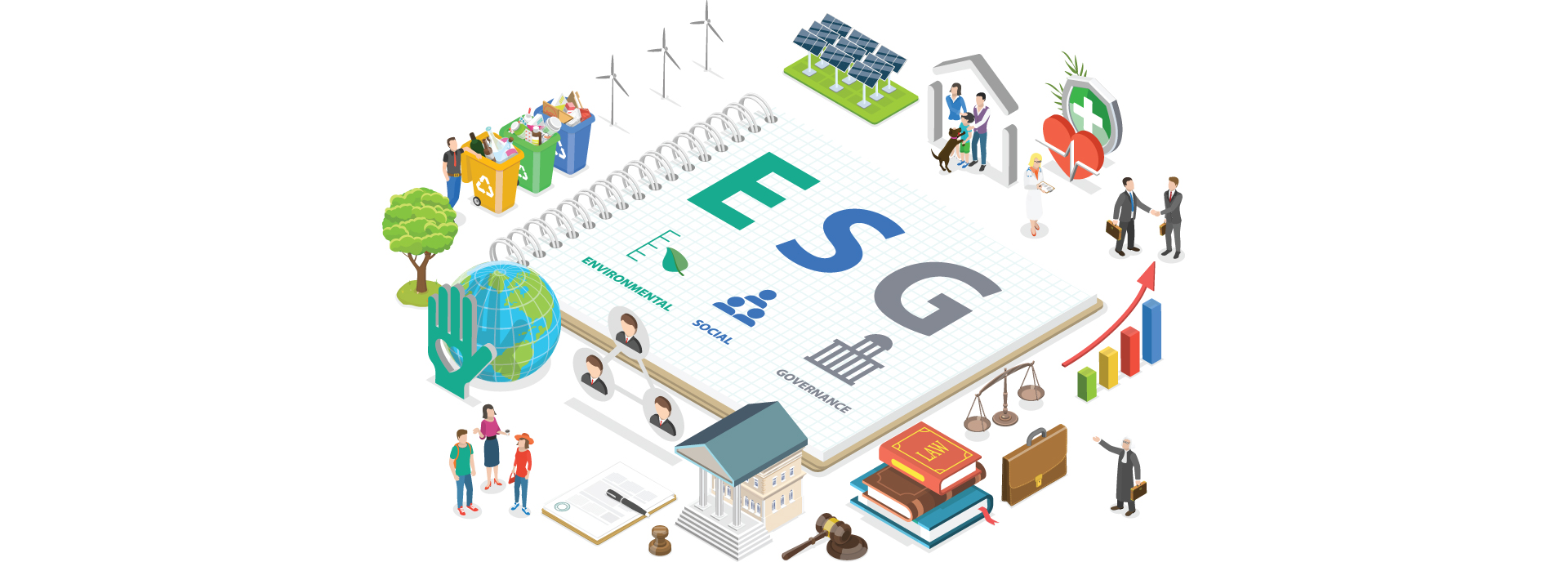

TAKEAWAYS
In Part 1 of this article, published in the February issue, I explained the 3Ws of ESG for Charities. To recap, ESG is a framework that has been popularised the world over by corporates but in recent times, it has become a hot topic of discussion within the People sector. As charities embark on their ESG journeys, they may face some uncertainties about the importance of ESG or even about its adoption.
Through my research, I have concluded that ESG is especially important to charities now, as many charity stakeholders, such as volunteers, donors, and regulators, are becoming more aware of ESG and are holding charities accountable for not practising ESG. While some charities have already implemented some ESG initiatives, moving forward, it is important that charities do more for ESG. This can be achieved on three fronts, namely (i) universal adoption of ESG practices, (ii) equal opportunities for all in the People sector, and (iii) going beyond compliance of laws towards ethics.
For charities embarking on their ESG journey, it is critical that they involve the whole of the charity (that is, donors, volunteers, and beneficiaries), intermediaries and the community (that is, regulators and corporates).
Now that the context for ESG for Charities is established, the next step is for charities to tackle the issue of “how” to do ESG. For charities which require guidance to begin their ESG journey, I have compiled a five-question framework for organisations to utilise (Figure 1).
Figure 1 The five ESG questions for charities

1) How to identify the component of ESG that is non-negotiable to your stakeholders?
With limited resources, it is not possible for organisations to focus on all aspects of ESG. Hence, it is advisable for organisations to prioritise certain ESG aspects over others. And, in the spirit of co-creation and co-delivery, it is paramount that the prioritised ESG aspect is important to you and your stakeholders. One method is to create an ESG matrix (Figure 2). The matrix would highlight the ESG element with the greatest impact on the largest proportion of stakeholders and create the greatest value. It is this win-win understanding that would enable you to achieve your organisational missions while doing good ESG.
Figure 2 ESG matrix

2) How is ESG incorporated into your organisation’s direction?
To incorporate ESG into your organisation’s direction is to put it into a cohesive plan. One such plan is to develop enhanced balance score cards which incorporate the perspectives of different stakeholders and mindsets into an organisation’s ESG goals and measures. While this comprehensive approach would help charities achieve their ESG targets, it is unnecessarily complex for smaller charities which face more resource constraints.
Figure 3 Removal strategy (left) and circular strategy (right)

For these smaller charities which may be overwhelmed by the prospect of an ESG balance score card, I propose two simple frameworks to incorporate ESG into your plans (Figure 3). The first is the removal strategy or the 3Rs framework – reduce, reuse, and recycle; the second is the circular strategy or the self-sustaining framework.
An example of the circular strategy would be programmes like Bread Run by Food from the Heart, where volunteers “rescue” unsold bread which are still consumable, and distribute them to our beneficiaries. This creates a win-win scenario where beneficiaries can receive the aid they require, and precious resources are not wasted.
3) How are your organisation’s people, process and structure changed for ESG?
To ensure that ESG is hardcoded into our DNA, we need to produce ESG standards of practice (SOP). In this regard, I have devised a simple sample ESG SOP that charities can incorporate into pre-existing SOPs.
During the planning and publicity stages of major events, a possible SOP would be to ensure that publicity materials use minimal amounts of paper, and that only vendors who practise ESG are engaged. During the execution of major events, recyclable materials are used whenever possible even in the goodie bags given to participants. After major events, as much as possible, the rubbish should be recycled. Also, recyclable materials should be used in the creation of thank-you gifts for sponsors and partners of events.
With clear SOPs like those above, staff members and volunteers would know precisely how to do ESG, thus dispelling any hesitation they might have towards ESG. The SOPs also help in ensuring that ESG practices can be carried out even without stringent monitoring.
4) How can you establish governance for ESG?
To ensure that there is proper governance of ESG, the Charity Council has included ESG as a principle for charities to uphold in the latest release of the draft Charity Governance Code. I believe that this principle provides an opportunity for charities to seek clarification, such as what ESG would look like for charities; what toolkits are available to help guide charities, and what some ESG guiding questions are.
For charities to understand how to practise ESG in accordance with the directions for the future, we will need to have more details on the behavioural norm that is to be expected of ESG-compliant charities.
5) How to showcase ESG successes to inspire others?
We will need to be better at telling our ESG success stories in the charity sector. Charities need to be recognised and encouraged for practising good ESG in hopes that they will become the ESG heroes that inspire others to follow. One way to do this is to introduce a new category in our Charity Governance Awards to spotlight charities which do good ESG. The winners of this category could share their best practices to inspire others.
We will need to start on ESG now.
In his 2019 National Day Rally Speech, Prime Minister Lee Hsien Loong highlighted that portions of Singapore will be submerged as a direct result of rising sea levels caused by climate change. The effects of climate change can also be felt beyond our shores. With increasing global temperatures, extreme weather phenomena will become more common, leading to devastating results. For instance, super typhoon Noru had swept its way through the Philippines, displacing thousands of people, flattening crops and causing millions of dollars in damages.
However, not all is doom and gloom as the effects of global warming is reversible if we act now. If each of us does our part in the fight for our planet, the little actions that we take each day will add up, and significantly reduce Singapore’s carbon footprint.
Our future is in your hands. Won’t you do something about it?
In my previous article, I mentioned that we will walk the journey with you, and that lifelong learning would be the way that we would handhold you through your ESG journey.
Figure 4 The three-pronged approach to ESG for Charities

The future of our planet is in peril and ESG would be the right thing for us to embrace, now. However, to embark on your ESG journey, on top of the strategies and process that I have put forth in Part 1 of this article, you may require further assistance. Hence, I have devised a three-pronged approach for us to tackle ESG, featuring training, consultancy, and grants (Figure 4):
1) Training. Lifelong learning is key to upskilling ourselves and charities are no exception. Educational institutes like the Singapore University of Social Sciences (SUSS), which offer ESG courses, will provide you with the necessary knowledge to develop and execute ESG strategies tailored to your organisation.
2) Consultancy. Concurrently, the Centre of Excellence for Social Good (CESG) in SUSS will also collaborate with like-minded organisations to create ESG shared services, allowing ESG to be done “cheap, good and fast”.
3) Grants. Lastly, for charities which face financial constraints, there are funds to help you kickstart your ESG journey; these include the SG Eco Fund and VWO-Charities Capability Fund.
As the world grapples with the effects of climate change, it is important to realise that we will still have time to reverse the negative effects. We will need to do ESG not only for our sake but also for the sake of our children and great-great grandchildren.
We have started on ESG and will need to do more through education and ESG policies for mother earth to recover. And, as always, we are prepared to handhold you on your ESG journey.
Professor Ang Hak Seng, FCA (Singapore), is Director, Centre of Excellence for Social Good (CESG) and Professor of Social Entrepreneurship, Singapore University of Social Sciences; and Adjunct Professor, Nanyang Technological University.